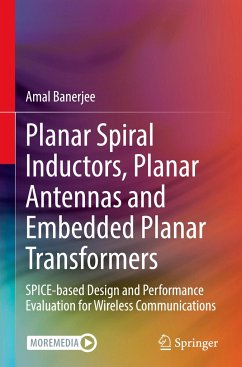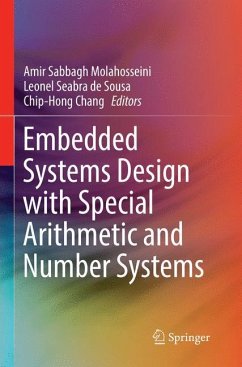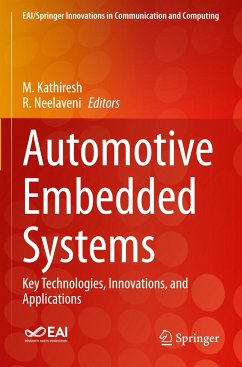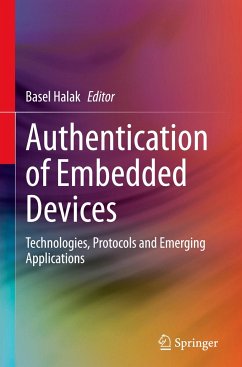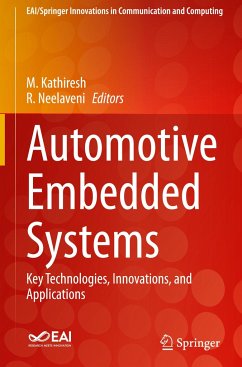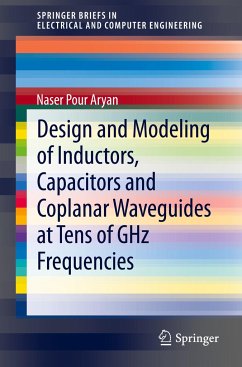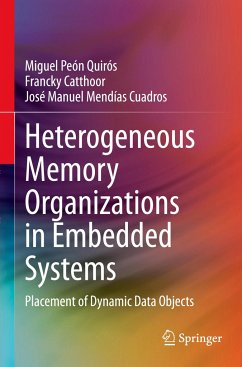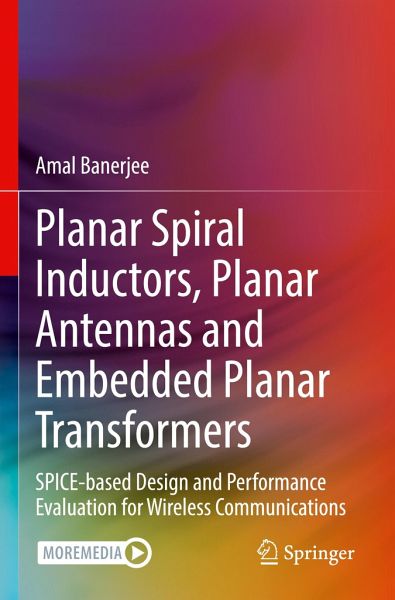
Planar Spiral Inductors, Planar Antennas and Embedded Planar Transformers
SPICE-based Design and Performance Evaluation for Wireless Communications
Versandkostenfrei!
Versandfertig in 6-10 Tagen
49,99 €
inkl. MwSt.
Weitere Ausgaben:

PAYBACK Punkte
25 °P sammeln!
This book presents a novel, automated, accurate and unified scheme to design and determine the performance characteristics of standalone planar, spiral inductors and multiple coupled planar spiral inductors (as in embedded transformers), for RF/microwave MMIC designers. The author demonstrates with a set of analysis/design examples a novel scheme that exploits judiciously the existing transmission theory and concepts, organizing and condensing available, scattered information/knowledge about planar spiral inductor, embedded planar transformer and planar antenna design and performance evaluatio...
This book presents a novel, automated, accurate and unified scheme to design and determine the performance characteristics of standalone planar, spiral inductors and multiple coupled planar spiral inductors (as in embedded transformers), for RF/microwave MMIC designers. The author demonstrates with a set of analysis/design examples a novel scheme that exploits judiciously the existing transmission theory and concepts, organizing and condensing available, scattered information/knowledge about planar spiral inductor, embedded planar transformer and planar antenna design and performance evaluation, into one coherent and unified electronic circuit model easily used by radio frequency electronic circuit engineers. A dedicated chapter contains an exhaustive (19) set of design examples.
Presents a bottom-up scheme, starting with Maxwell's equations of classical electrodynamics and transmission line theory (Telegrapher's equation), specifically microstrips;Demonstrates design of standalone planar, spiral inductors and multiple coupled planar spiral inductors;Includes a set of ready-to-use, C executables (for both Linux and Windows) , that accept predefined input parameters for each of the sub-circuits discussed and generate SPICE netlists for the equivalent electrical circuit;Automates execution of multi-step design calculations to guarantee their accuracy and reliability.
Presents a bottom-up scheme, starting with Maxwell's equations of classical electrodynamics and transmission line theory (Telegrapher's equation), specifically microstrips;Demonstrates design of standalone planar, spiral inductors and multiple coupled planar spiral inductors;Includes a set of ready-to-use, C executables (for both Linux and Windows) , that accept predefined input parameters for each of the sub-circuits discussed and generate SPICE netlists for the equivalent electrical circuit;Automates execution of multi-step design calculations to guarantee their accuracy and reliability.





